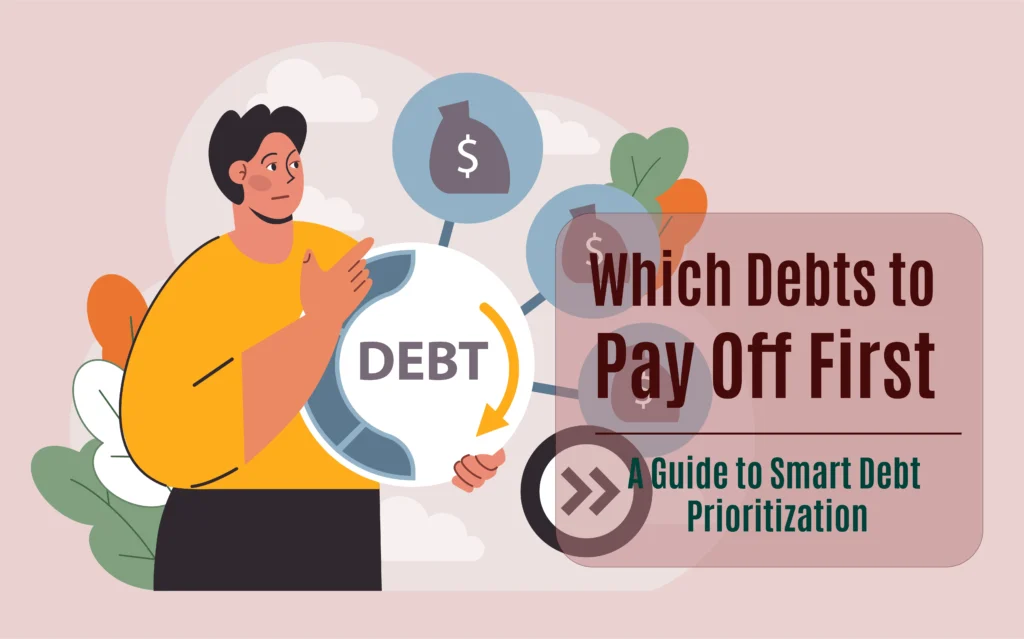Why Strategic Thinking is Important in Leadership
Leadership today is not just about managing people or keeping operations running smoothly. To be truly effective, leaders must possess the ability to think strategically. Strategic thinking goes beyond day-to-day decision-making; it’s about anticipating future trends, assessing long-term implications, and aligning organizational efforts with the big picture. In a fast-evolving, competitive landscape, strategic thinking is what differentiates a leader who reacts to change from one who drives change.
In this article, we’ll explore what strategic thinking entails, why it’s crucial for leadership success, and how leaders can develop and apply this critical skill to navigate uncertainty and lead their organizations toward sustainable growth.

Understanding Strategic Thinking
Strategic thinking is a critical leadership skill that enables leaders to envision the future, plan for long-term objectives, and make decisions that align with overarching goals. It involves the ability to anticipate opportunities and challenges, connect seemingly unrelated dots, and make choices that will benefit the organization not just in the present, but in the years ahead.
Strategic Thinking vs. Tactical Thinking
One important distinction to make is the difference between strategic thinking and tactical thinking. Tactical thinking focuses on short-term tasks, immediate results, and operational efficiency. It’s about managing day-to-day operations and making sure that things run smoothly. While tactical thinking is important for getting things done in the moment, it doesn’t provide the vision or foresight needed for long-term growth.
Strategic thinking, on the other hand, is all about the bigger picture. It involves setting long-term goals, planning for the future, and thinking about where the organization needs to be five or ten years from now. While tactical thinking might solve immediate issues, strategic thinking ensures that the company is moving in the right direction for the future. Both are necessary, but strategic thinking is what allows leaders to create a sustainable future.
Key Attributes of a Strategic Leader
What makes a leader a strategic thinker? There are several core attributes that define a strategic leader:
- Vision: Strategic leaders have a clear sense of where they want the organization to go. They can articulate a compelling vision that aligns with the company’s goals and inspires others to follow.
- Adaptability: In a rapidly changing environment, strategic thinkers are flexible and can adjust their plans based on new information or changing circumstances.
- Critical thinking: Strategic leaders analyze situations deeply, considering multiple perspectives and potential outcomes. They don’t make decisions based on gut instinct alone; they rely on data and insights to guide their choices.
- Foresight: Strategic thinkers have the ability to anticipate future trends, market shifts, and industry disruptions. They are constantly scanning the environment for signs of change and positioning their organizations accordingly.
- Risk tolerance: Strategic leaders are willing to take calculated risks. They understand that some level of risk is necessary for growth and are not afraid to step outside of their comfort zone.
Why Strategic Thinking is Critical for Leadership Success
Strategic thinking isn’t just a nice-to-have skill for leaders—it’s a necessity. In an era defined by rapid technological advancements, global competition, and constant change, leaders who can think strategically are the ones who steer their organizations toward long-term success.
Long-Term Vision and Sustainability
One of the most significant reasons strategic thinking is essential is that it allows leaders to create a long-term vision for their organization. Without a clear vision, businesses can easily lose direction, focusing too much on immediate tasks without a sense of where they are heading. Leaders who think strategically set a course for the future and guide their teams toward achieving sustainable growth.
For example, a leader who is focused on quarterly profits might overlook investment in innovation or fail to build new capabilities that will be critical for future success. On the other hand, a strategic leader recognizes the importance of balancing short-term gains with long-term sustainability. They invest in research and development, technology upgrades, and employee training, ensuring that the organization is prepared for future challenges and opportunities.
Managing Uncertainty and Change
In today’s volatile business environment, change is constant. Whether it’s technological disruptions, shifting consumer preferences, or unexpected global events, leaders must navigate uncertainty effectively. Strategic thinking allows leaders to anticipate and prepare for these changes rather than react to them after the fact.
For instance, during the COVID-19 pandemic, organizations that had leaders with strong strategic thinking skills were able to pivot quickly, adapting their operations to remote work or adjusting their business models to meet new market demands. These leaders had already considered potential disruptions and had contingency plans in place. By contrast, companies without a strategic approach found themselves scrambling to respond, often at great cost.
Strategic leaders anticipate the potential challenges and prepare their teams to adapt. They foster resilience by planning for multiple scenarios and ensuring that the organization is agile enough to respond to changes in the marketplace.
Aligning Organizational Goals with Market Trends
Markets evolve, and consumer demands shift, often unpredictably. Leaders who think strategically are adept at identifying emerging market trends and aligning their organization’s goals to capitalize on these trends. Strategic thinking allows leaders to be proactive rather than reactive, positioning their company ahead of the competition.
For example, the rise of digital transformation has significantly impacted industries ranging from retail to manufacturing. Companies that embraced digital technologies early—such as e-commerce, automation, and data analytics—gained a significant competitive edge. Strategic leaders recognized these shifts and made deliberate decisions to align their business strategies with evolving consumer preferences and technological advancements.
By staying attuned to market trends, strategic thinkers can ensure that their organizations remain relevant and competitive in an ever-changing landscape.
Enhancing Decision-Making and Problem-Solving
Decision-making is at the heart of leadership, and strategic thinkers excel in making informed, long-term decisions. By considering future implications and weighing various options, strategic leaders make better decisions that benefit the organization over time. They don’t just solve the problem at hand—they consider how each decision fits into the broader context of the organization’s goals.
For example, a strategic thinker faced with a declining market share doesn’t simply cut costs to maintain profitability. Instead, they might explore new markets, invest in product innovation, or form strategic partnerships to drive long-term growth. This ability to solve problems holistically sets strategic leaders apart from those focused solely on immediate results.
Strategic thinkers also approach problem-solving with a focus on root causes rather than surface-level symptoms. They dig deeper into challenges to identify the underlying issues and find solutions that address both current and future needs.
Developing Strategic Thinking as a Leadership Skill
While some leaders may naturally possess strategic thinking abilities, it is a skill that can be cultivated and strengthened over time. By adopting specific mindsets and practices, leaders can enhance their ability to think strategically and lead their organizations toward future success.
Cultivating a Forward-Looking Mindset
The first step in developing strategic thinking is cultivating a forward-looking mindset. Leaders must train themselves to look beyond immediate concerns and focus on the future. This requires setting aside time to reflect on long-term goals, evaluate trends, and consider how current actions will impact future outcomes.
Leaders can practice this by regularly engaging in strategic planning sessions, reading industry reports, and staying informed about global trends. Creating space for long-term thinking, even in the midst of day-to-day operations, is critical for building a strategic mindset.
Improving Critical Thinking and Analysis
Critical thinking is a foundational skill for strategic leaders. To make informed decisions, leaders must be able to analyze data, evaluate different perspectives, and assess potential risks and rewards. This requires a disciplined approach to decision-making, where leaders challenge assumptions, ask probing questions, and think through the consequences of their choices.
Leaders can improve their critical thinking skills by seeking out opportunities to solve complex problems, analyzing case studies, and engaging in scenario planning exercises. By developing a habit of thinking critically, leaders can improve the quality of their strategic decisions.
Encouraging Collaboration and Diverse Input
Strategic thinking benefits from diverse perspectives. Leaders should seek input from a wide range of stakeholders—whether it’s their leadership team, employees from different departments, or external advisors. Collaboration fosters creativity and helps leaders consider new angles they might not have thought of on their own.
Cross-functional teams can also enhance strategic thinking by bringing together individuals with different expertise and insights. Leaders who encourage collaboration and seek out diverse viewpoints are better equipped to develop well-rounded strategies that account for various factors and potential outcomes.
Embracing Innovation and Risk-Taking
Strategic thinkers understand that innovation is essential for growth and that taking risks is often necessary to achieve long-term success. Leaders who embrace innovation encourage their teams to think creatively and experiment with new ideas. They foster a culture where calculated risks are seen as opportunities for growth rather than something to be avoided.
By promoting innovation and allowing room for experimentation, strategic leaders create an environment where new ideas can flourish, helping the organization stay ahead of the competition and adapt to changing market conditions.
≫ Related Post: How to Manage Remote Teams Effectively
Real-World Examples of Strategic Thinking in Leadership
Strategic thinking has played a pivotal role in the success of many organizations. Consider the following real-world examples where leaders demonstrated strategic thinking in action.
Case Study: Strategic Leadership in Crisis
During the global financial crisis of 2008, many companies struggled to survive. However, some leaders were able to use strategic thinking to guide their organizations through the storm. For instance, companies like Ford implemented forward-thinking strategies by focusing on operational efficiency and investing in future technologies, such as electric vehicles, while others were forced into bankruptcy or government bailouts.
Strategic leaders at Ford anticipated the changing landscape of the auto industry and made bold moves that positioned the company for future growth. By focusing on long-term objectives rather than short-term fixes, they were able to navigate the crisis and emerge stronger.
Strategic Transformation and Growth
A notable example of strategic thinking is Netflix’s transition from a DVD rental company to a global streaming service. Reed Hastings, the CEO, saw the future of content consumption shifting toward digital platforms and invested in streaming technology early on. Netflix’s strategic decision to pivot away from physical DVDs allowed it to dominate the streaming industry and expand globally.
This shift required long-term thinking, as it involved significant investment and risk. However, Hastings’s strategic vision positioned Netflix as a leader in the entertainment industry, with a business model that continues to evolve.
Challenges to Strategic Thinking in Leadership
Despite its importance, strategic thinking comes with its own set of challenges. Leaders must be mindful of these obstacles and find ways to overcome them in order to succeed.
Overcoming Short-Term Pressure
One of the biggest challenges leaders face is balancing short-term pressures with long-term strategic goals. Quarterly earnings reports, investor expectations, and operational demands can create a sense of urgency that pulls leaders away from strategic thinking.
To overcome this challenge, leaders must prioritize long-term success over short-term gains. This might involve making difficult decisions, such as delaying immediate profits to invest in innovation or infrastructure that will drive future growth.
Avoiding Cognitive Biases in Strategic Planning
Leaders are not immune to cognitive biases, which can cloud their judgment and hinder strategic thinking. Common biases, such as confirmation bias (favoring information that supports preexisting beliefs) or status quo bias (preference for maintaining current conditions), can limit a leader’s ability to think critically and explore new ideas.
To avoid these biases, leaders should actively seek out diverse perspectives, challenge their assumptions, and engage in reflective decision-making processes.
Building Strategic Agility in a Fast-Changing World
In today’s fast-paced world, strategic agility is critical. Leaders must be able to adjust their strategies quickly in response to new information or changing circumstances. This requires staying flexible and being willing to pivot when necessary.
Leaders who embrace strategic agility ensure that their organizations remain resilient and adaptable, even in the face of uncertainty.
Sustaining Strategic Thinking in Leadership
Strategic thinking is not a one-time exercise; it must be sustained over the long term. Leaders need to continually refine their strategies, adapt to new challenges, and cultivate a culture of strategic thinking within their organizations.
Continuous Learning and Adaptation
Strategic leaders understand the importance of continuous learning. They stay informed about industry trends, technological advancements, and emerging opportunities. By remaining curious and open to new ideas, leaders can ensure that their strategic plans remain relevant in an ever-changing world.
Monitoring Outcomes and Adjusting Strategies
To maintain strategic momentum, leaders must regularly monitor progress and evaluate the effectiveness of their strategies. This involves setting measurable goals, tracking key performance indicators, and being open to adjusting plans based on new insights.
Fostering a Strategic Culture Across the Organization
Strategic thinking should not be limited to leadership; it should be embedded throughout the organization. Leaders can foster a strategic culture by encouraging employees to think beyond their immediate tasks and consider how their work contributes to the organization’s long-term success. By promoting strategic thinking at all levels, leaders ensure that their entire team is aligned with the company’s goals.
Conclusion: Strategic Thinking as a Leadership Imperative
In an increasingly complex and competitive world, strategic thinking is essential for leadership success. It enables leaders to anticipate challenges, seize opportunities, and guide their organizations toward long-term growth. By cultivating a forward-looking mindset, improving critical thinking, embracing innovation, and fostering a strategic culture, leaders can position their organizations for sustainable success.
Ultimately, strategic thinking is not just a skill—it’s a mindset that allows leaders to navigate uncertainty, adapt to change, and drive their organizations toward a future filled with possibilities.
















